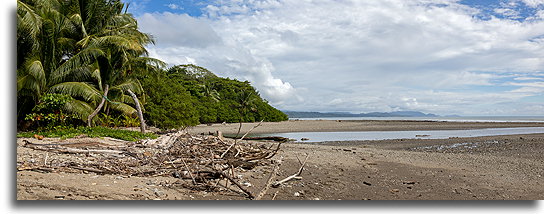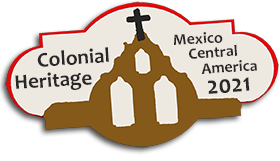Beaches in Costa Rica
November 4-5
It rains a lot in Monteverde. We were lucky enough to park under the roof and have a cover for our roof tent. The rainy night was over, but in the morning the weather did not improve much. One of the biggest advantages of overlanding is the flexibility to change plans. The prospect of staying in Monteverde and visiting places such as a Wildlife Refuge, a Frog Pond or a Butterfly Gardens during the rain did not promise the possibility of encountering wild animals. It was a quick decision. We decided to head to the Pacific coast.



So far, we admired the nature of Costa Rica, but what about her colonial past? It was here, on the Nicoya Peninsula, where in 1522 the Spanish conquistador Gil González de Ávila encountered the largest concentration of Native Americans. The local population did not put any resistance and was quickly baptized. De Ávila was able to get a significant amount of gold from them, which he took back to Panama and Hispaniola. This is how the colonization of Costa Rica began. As usual, colonization begins with the introduction of a new religion and construction of churches. The first temple was built in today's Nicoya city in 1522-1544. The building standing today has a traditional white color and small bells in the façade.


Only the main highways in Costa Rica are in acceptable condition. Every side road, even paved, is slow, bumpy with potholes. It took us 6 hours to cover 115 miles / 185 km. In the afternoon we located a small Camping COCO'S in Samara.
Pacific beaches cannot compete with the Caribbean. Samara Beach is long and wide, but lacks the charm that can be found on the shores of so many tropical islands. The reason is undoubtedly in the volcanic origin of gray, dirty-looking, heavy and sticky sand here, as opposed to the white, light and delicate sand made of coral skeletons. There was nothing charming in Samara, so we decided to see other parts of the Nicoya Peninsula.



We ended up spending the whole day in the car driving on dirt roads. Progress was extremely slow. Exhausted, we realized that we would never find a beautiful calm beach. It was long after sunset when we reached Montezuma at the southern tip of the peninsula. We drove only 90 km / 55 miles that day, and it took us a full eight hours.


At 8 pm, we arrived at the Fernado Morales Campsite located almost on the beach. There were no other people around, but finding a safe place to park the car was a challenge. We were in a coconut forest. The palm trees around had lots of mature fruits ready to fall. Statistics say that there is a greater chance of death from a falling coconut than from a shark attack. We had to park in such a location that a falling coconut not only will not hit a car, but most importantly will not fall on our heads. We heard some fruit falling that night. It is a small deaf explosion; you feel the vibration as if a heavy hammer hit the ground. Someone has calculated that falling coconuts can hit a person under a tree with a force of almost 2,000 pounds / 900 kilograms.









